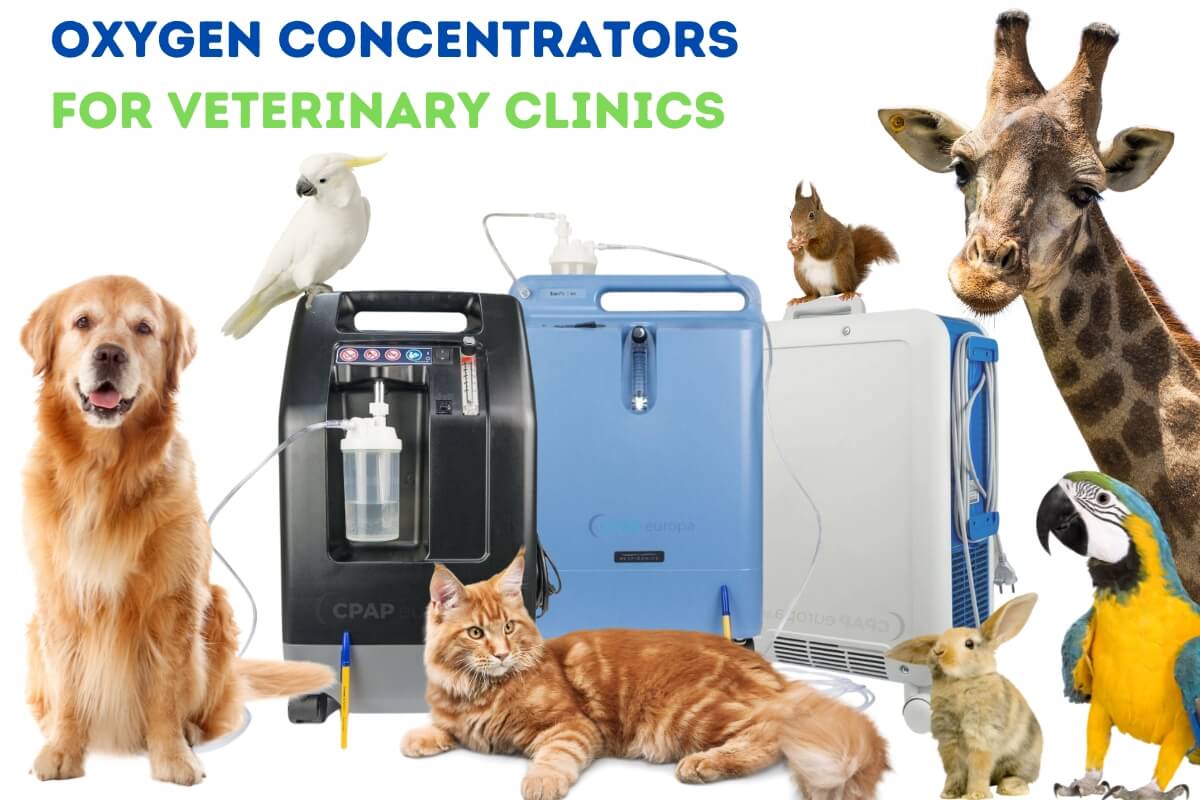
The use of oxygen concentrators in veterinary clinics has become increasingly common in recent years, revolutionizing the way animals receive oxygen therapy. This article will delve into the world of oxygen concentrators for veterinary practices, exploring their history, functionality, selection criteria, and the additional equipment required for optimal patient care. Gregory and Gaby from CPAPeuropa will also provide insights into popular models, including the DeVilbiss 525 Oxygen Machine, DeVilbiss 10 LPM Oxygen Machine, and Philips Respironics EverFlo Machine, along with recommendations for choosing the right liters per minute (LPM) for a standard veterinary clinic.
When Did Oxygen Concentrators Start Being Used in Veterinary Clinics?
The use of oxygen concentrators in veterinary medicine can be traced back to the early 2000s when technological advancements made these devices more accessible and affordable. Prior to this, oxygen therapy in veterinary practice primarily relied on oxygen cylinders, which posed logistical challenges in terms of storage, refilling, and transport. Oxygen concentrators, with their ability to generate oxygen on-site and continuously, offered a practical solution to these issues. Since then, their adoption in veterinary clinics has steadily grown, thanks to their reliability and cost-effectiveness.
How Do O2 Machines for Vet Practices Work?
Oxygen concentrators operate on a relatively simple principle: they extract oxygen from ambient air and deliver it in a purer form to patients who require oxygen therapy. Here’s a brief overview of how these devices function:
- Air Intake: The concentrator takes in room air through an intake filter, removing dust and other impurities in the process.
- Compression: The air is then compressed and passed through a sieve bed filled with a material called zeolite, which has a high affinity for nitrogen. Zeolite selectively captures nitrogen molecules, allowing oxygen to pass through.
- Oxygen Delivery: The now oxygen-enriched air is collected and delivered to the patient via a tubing system and an appropriate delivery device, such as a mask, nasal cannula, or endotracheal tube.
- Release of Nitrogen: After some time, the zeolite bed becomes saturated with nitrogen and needs to be regenerated. The concentrator switches to a second sieve bed while releasing the captured nitrogen from the first bed. This cycle repeats continuously, ensuring a steady supply of oxygen.
How to Choose the Right Model of Oxygen Concentrator for Your Veterinary Clinic
Selecting the right oxygen concentrator for your veterinary clinic is a crucial decision that can impact patient care, safety, and the overall efficiency of your practice. Consider the following factors when making your choice:
- Oxygen Flow Rate (LPM): Determine the average oxygen flow rate required for your patients. For a standard veterinary clinic, a concentrator with a flow rate of 5-10 LPM is typically sufficient.
- Portability and Space: Assess the available space in your clinic and whether you need a stationary or portable concentrator. Portable models are ideal for clinics with occasional mobility needs.
- Noise Level: Oxygen concentrators can produce varying levels of noise. Consider quieter models to minimize stress on both patients and staff.
- Durability and Maintenance: Look for reliable brands known for their durability and ease of maintenance. Regular servicing is essential to ensure the continued performance of your concentrator.
- Backup Oxygen Source: While concentrators are reliable, having a backup oxygen source, such as oxygen cylinders, is advisable to ensure uninterrupted patient care in case of power outages or equipment failures.
- Budget: Consider your budget constraints, but prioritize the quality and reliability of the concentrator over price.
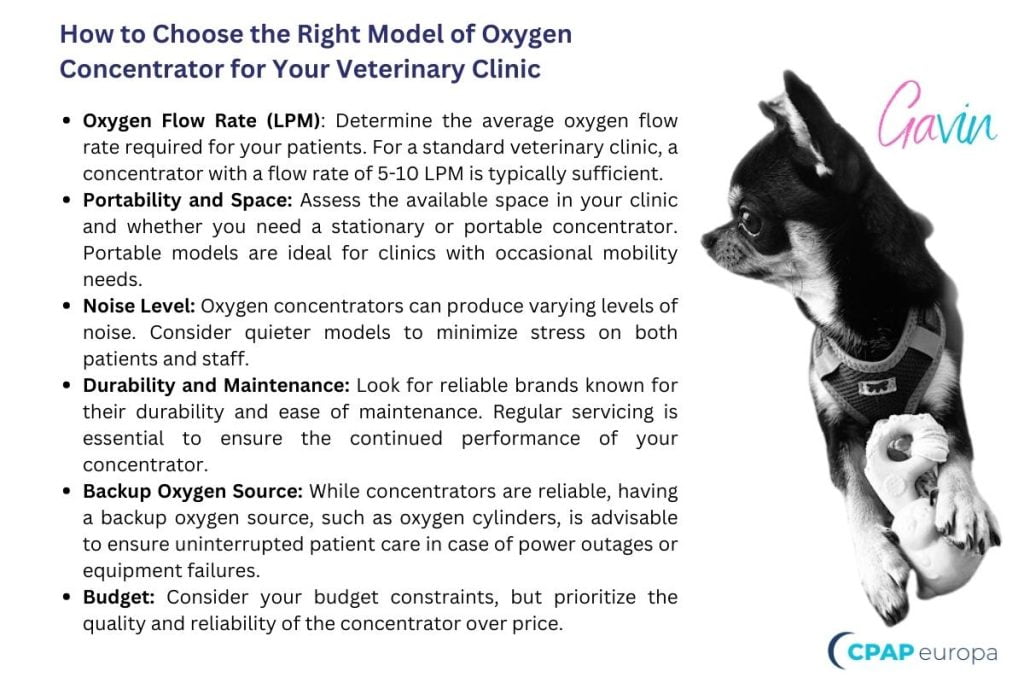
Selecting the appropriate LPM for a standard veterinary clinic depends on the patient population and the types of procedures performed. Generally, a range of 5-10 LPM should suffice for most clinics. However, it’s essential to evaluate your specific requirements to make an informed choice.
What Other Equipment Do You Need to Provide Oxygen to Your Animals at the Clinic?
While an oxygen concentrator is a critical component of oxygen therapy in veterinary practice, it’s not the only equipment you’ll need. Here are some essential items to complement your concentrator:
- Oxygen Delivery Devices: Depending on the size and condition of the animals you treat, you’ll need a variety of delivery devices, including masks, nasal cannulas, endotracheal tubes, and oxygen hoods.
- Oxygen Tubing: High-quality oxygen tubing ensures a secure and consistent flow of oxygen to your patients.
- Flowmeters: Flowmeters are used to precisely control and adjust the oxygen flow rate to match the needs of different patients.
- Oxygen Reservoir Bags: These bags assist in the delivery of high-flow oxygen and are especially useful for critical cases.
- Monitoring Equipment: Vital signs monitors, including pulse oximeters and capnographs, help assess the effectiveness of oxygen therapy and the patient’s response.
- Oxygen Cages: Oxygen cages are specially designed enclosures that maintain a high concentration of oxygen for animals that require extended therapy.
What are the Most Used Models of Oxygen Concentrators and Recommended LPM for a Standard Veterinary Clinic
- DeVilbiss 525 Oxygen Machine:
Theis a reliable and durable oxygen concentrator with a flow rate of up to 5 LPM. This model is suitable for smaller veterinary clinics with moderate oxygen therapy requirements. Its compact design and quiet operation make it an excellent choice for clinics with limited space and noise-sensitive environments.
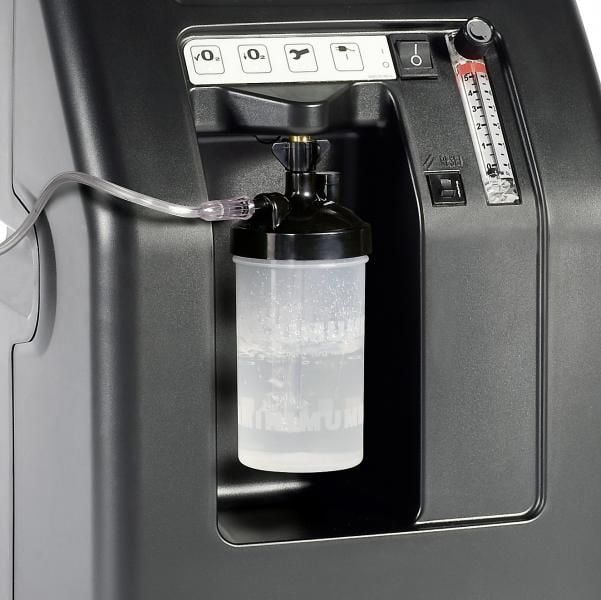
- DeVilbiss 10 LPM Oxygen Machine:
For larger veterinary practices or those with a higher demand for oxygen, the DeVilbiss 1025 (10 LPM) Oxygen Machine is an excellent choice. With a maximum flow rate of 10 LPM, it can cater to a wider range of patients and procedures. Its robust construction and efficient performance make it suitable for clinics with heavy oxygen therapy needs.
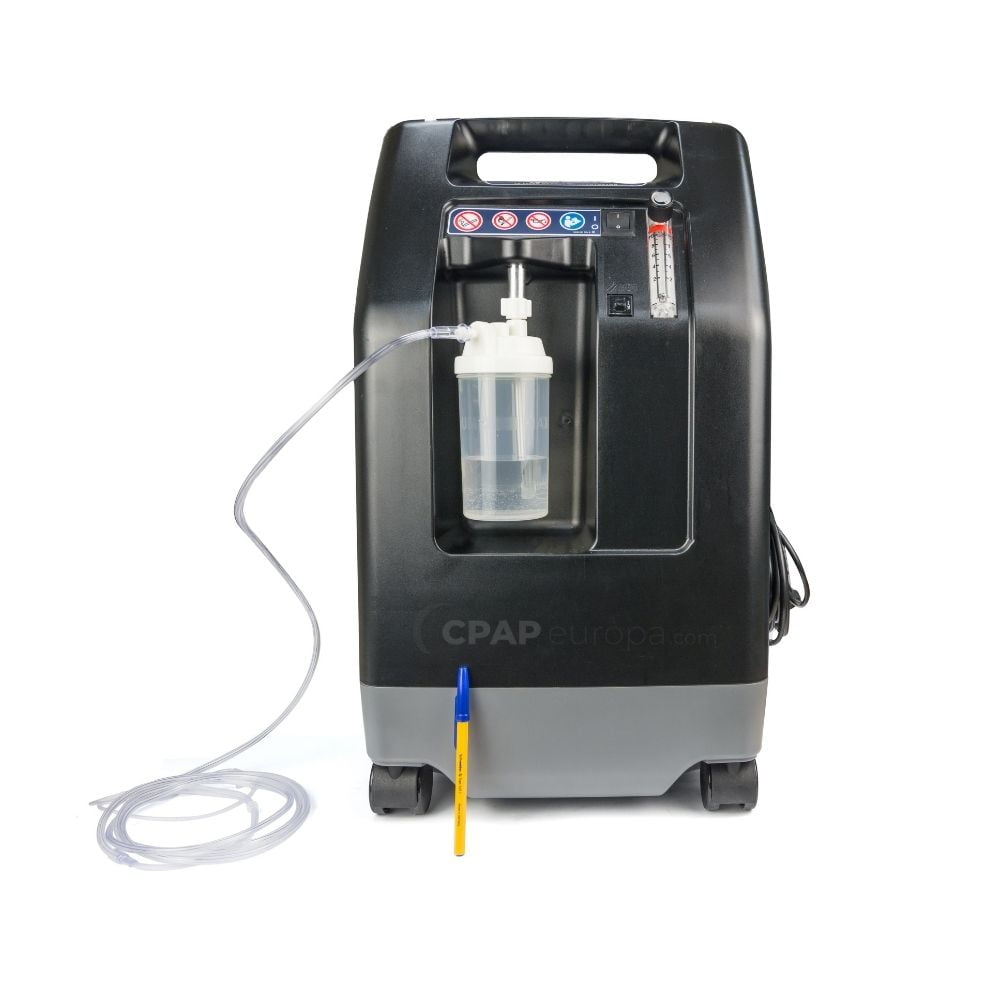
- Philips Respironics Everflo Machine
The Philips Respironics Everflo Machine is another reputable option, known for its reliability and ease of maintenance. With a flow rate of up to 5 LPM, it suits smaller to mid-sized veterinary clinics. It offers the advantage of low noise emissions, ensuring a calm environment for both patients and staff.
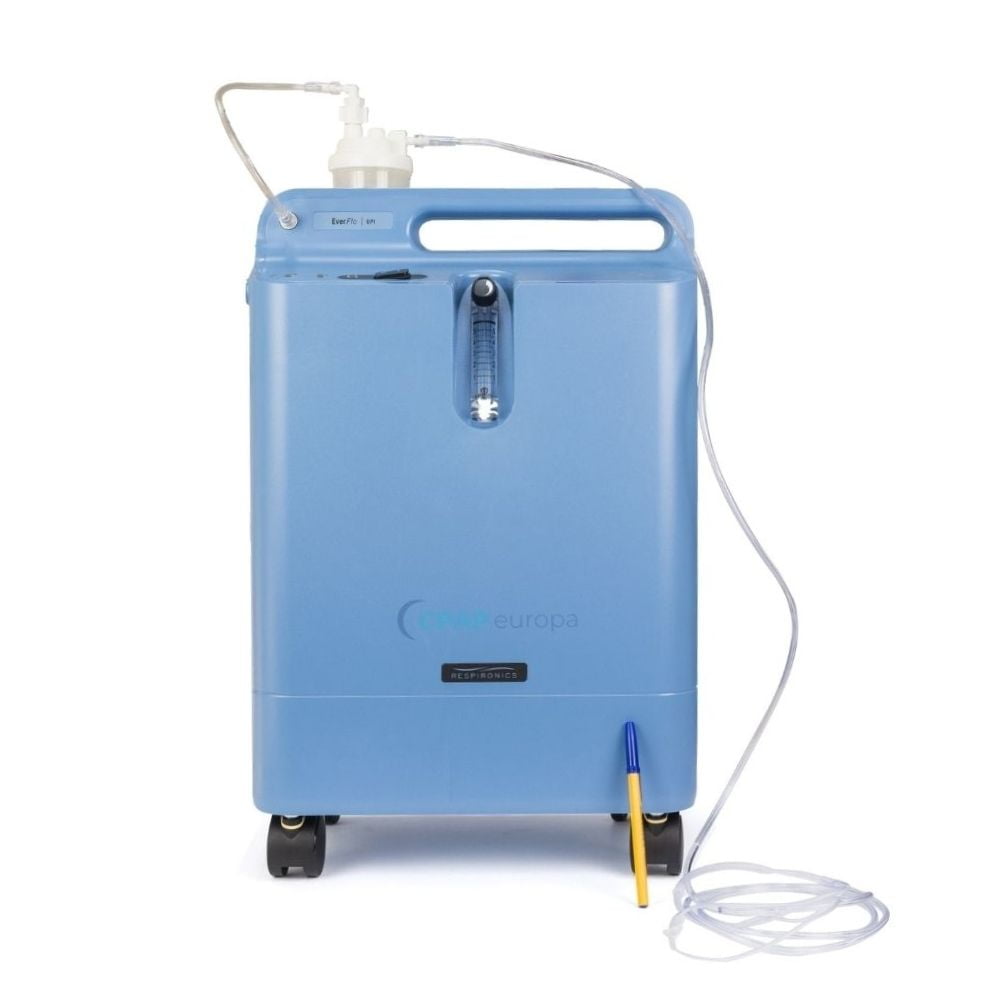
If you are not sure which model is right for your practice, do not hesitate to ask us at [email protected]. Please mention specifically that you require an O2 machine for a veterinary clinic.
Animal Illnesses and Emergency Cases Requiring Oxygen Concentrators:
Respiratory Distress: One of the most common uses of oxygen concentrators in veterinary medicine is for treating animals experiencing respiratory distress. This can occur due to a wide range of conditions, including:
- pneumonia;
- asthma;
- bronchitis;
- or any situation where the animal struggles to breathe adequately.
Oxygen therapy can provide immediate relief and support in such cases:
Surgery and Anesthesia: During surgical procedures that require anesthesia, animals may experience decreased oxygen levels. Oxygen concentrators are essential for post-operative recovery, helping animals regain consciousness and stabilize their breathing;
- Trauma and Shock: In cases of trauma or shock, animals may suffer from decreased oxygen levels, leading to compromised tissue function. Oxygen therapy aids in restoring tissue oxygenation and promoting recovery;
- Poisoning: Oxygen therapy can be crucial in treating animals exposed to toxic substances that affect their respiratory system. It helps to flush out toxins and support the body’s natural detoxification processes;
- Cardiac Conditions: Animals with certain cardiac conditions may benefit from supplemental oxygen to alleviate the strain on their hearts and improve oxygen delivery to tissues;
- Neonatal Care: Newborn animals, especially puppies and kittens, may require oxygen therapy if they are born prematurely or experience respiratory difficulties at birth;
- High-Altitude Areas: Veterinary clinics in high-altitude regions may use oxygen concentrators as a preventive measure for animals experiencing altitude sickness, which can cause hypoxia.
Most commonly treated with O2 Concentrators animal patients:
Oxygen concentrators can be used for a wide range of animal species, including but not limited to:
- Dogs and Cats: These are the most common patients in veterinary clinics, and oxygen therapy is routinely administered to these animals.
- Birds: Avian patients, such as parrots or birds of prey, can benefit from oxygen therapy, particularly after surgeries or when they are experiencing respiratory distress.
- Small Mammals: Animals like rabbits, guinea pigs, ferrets, and rodents can also receive oxygen therapy if needed.
- Reptiles: While less common, some veterinary clinics may treat reptiles like snakes, turtles, and lizards, and oxygen concentrators can be adapted for use with them.
- Larger Animals: For larger animals like horses, cows, or exotic species, specialized large-capacity oxygen concentrators or oxygen delivery systems may be required to meet their oxygen therapy needs.
- Aquatic Animals: Veterinary clinics with aquatic patients, such as fish or amphibians, may use oxygen concentrators in conjunction with aquatic oxygen delivery systems.
Important note:
It’s important to note that the use of oxygen concentrators should always be supervised by trained veterinary professionals to ensure the correct oxygen flow rate, patient monitoring, and appropriate oxygen delivery devices are used for each case. Additionally, the specific conditions and requirements may vary for different animal types, so consulting with a veterinarian experienced in the treatment of the respective species is essential for safe and effective oxygen therapy.
The main benefits of using Oxygen Concentrators for your veterinary practice
- Oxygen concentrators are a reliable and cost-effective solution for delivering oxygen to animals in need
Oxygen concentrators have revolutionized oxygen therapy in veterinary clinics, offering a reliable and cost-effective solution for treating our beloved animal patients. By understanding their history, functionality, selection criteria, and the additional equipment required, veterinary practices can enhance patient care and safety.
Not sure which oxygen concentrator machine would suit your furry patients? No problem! We are here to help!
Popular models like the DeVilbiss 525 (5 LPM), the DeVilbiss 1025 (10 LPM), and Philips Respironics Everflo (5 LPM) offer varying flow rates to suit different clinic sizes and needs. Carefully evaluate your clinic’s requirements to select the most suitable model. Incorporating oxygen concentrators into your veterinary practice can elevate the standard of care you provide to your animal patients, leading to improved outcomes and overall practice success.
 4.8 out of 5 based on 211 reviews
4.8 out of 5 based on 211 reviews 
